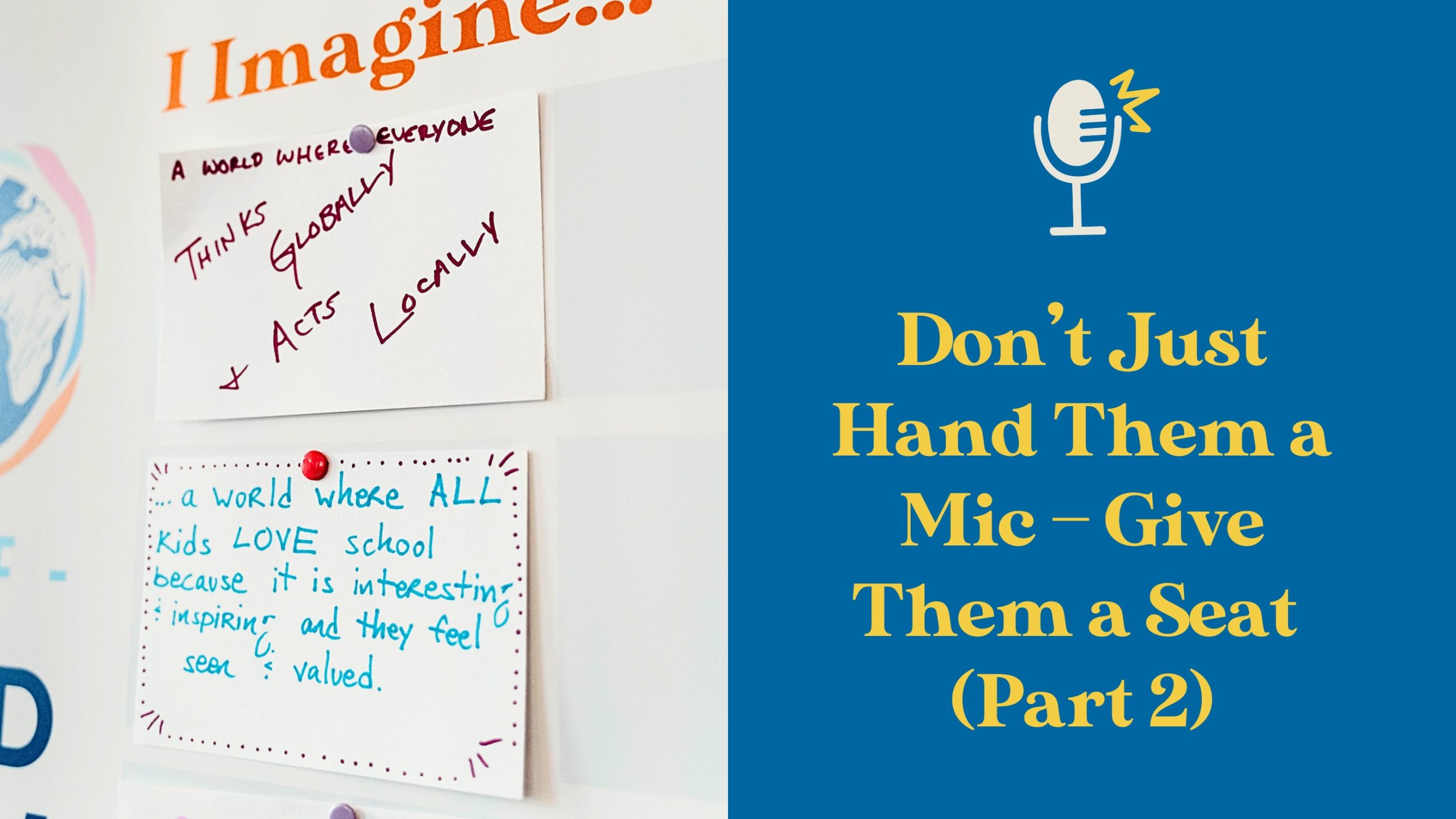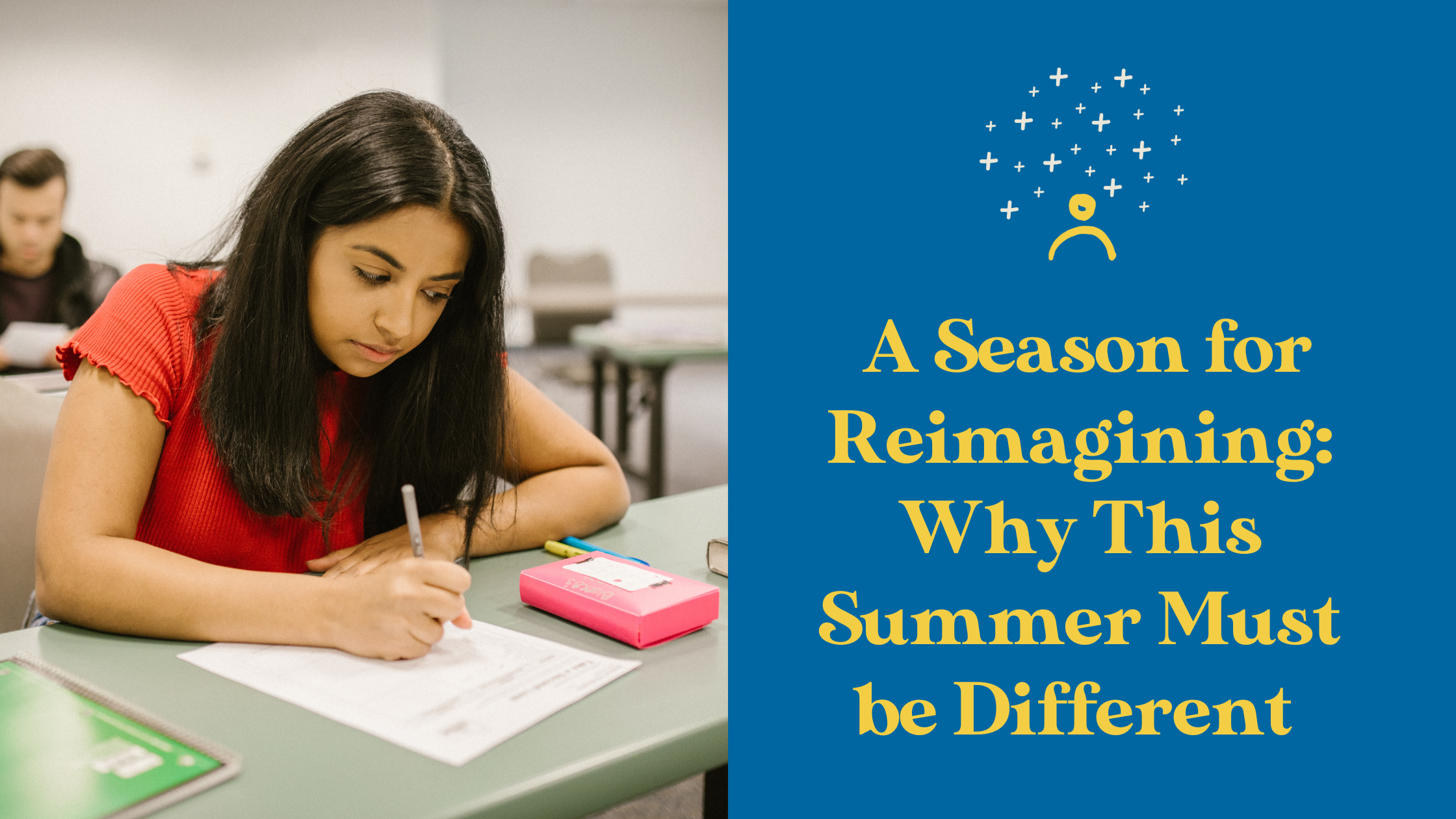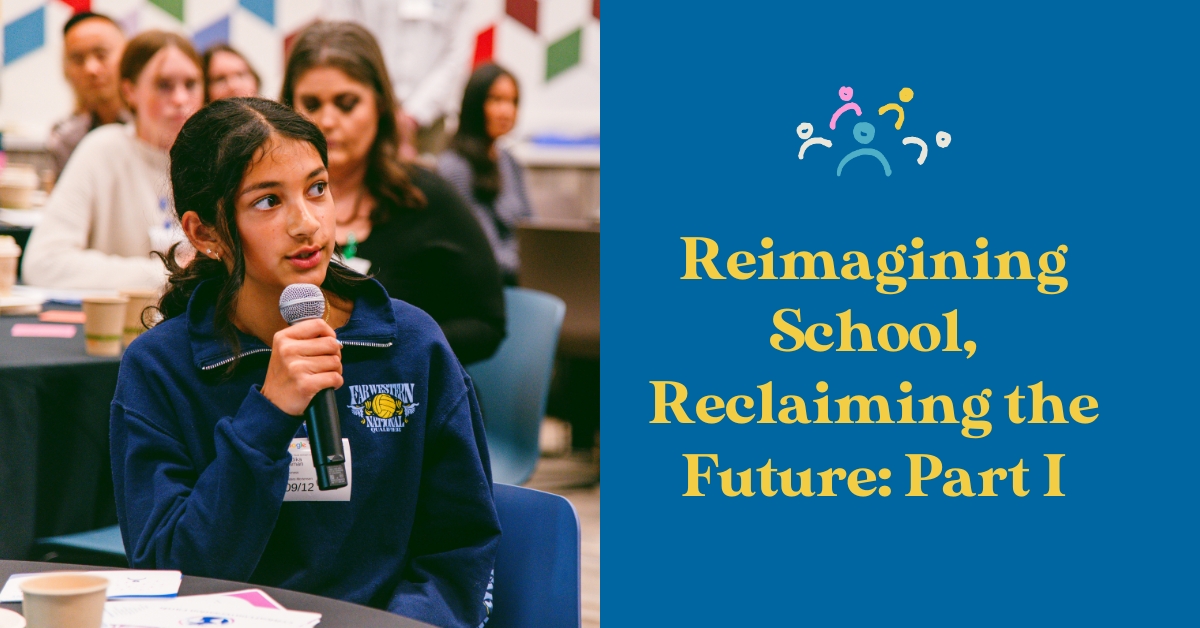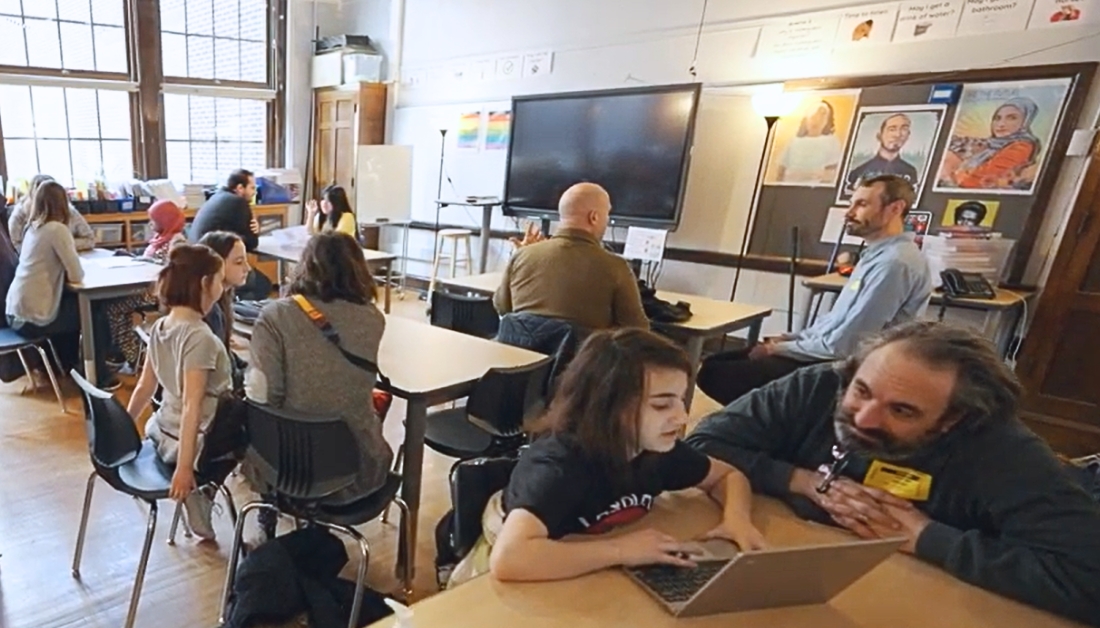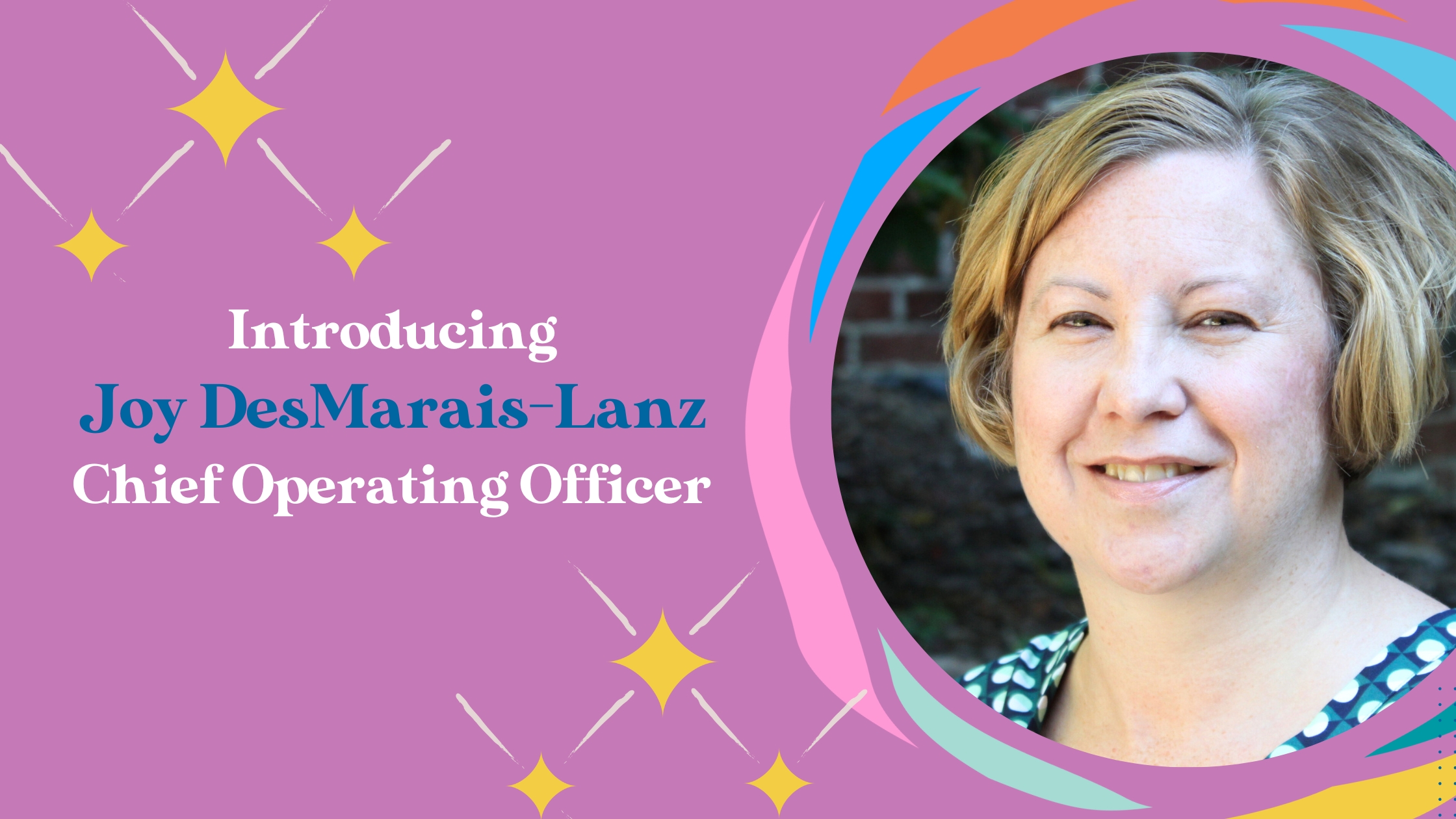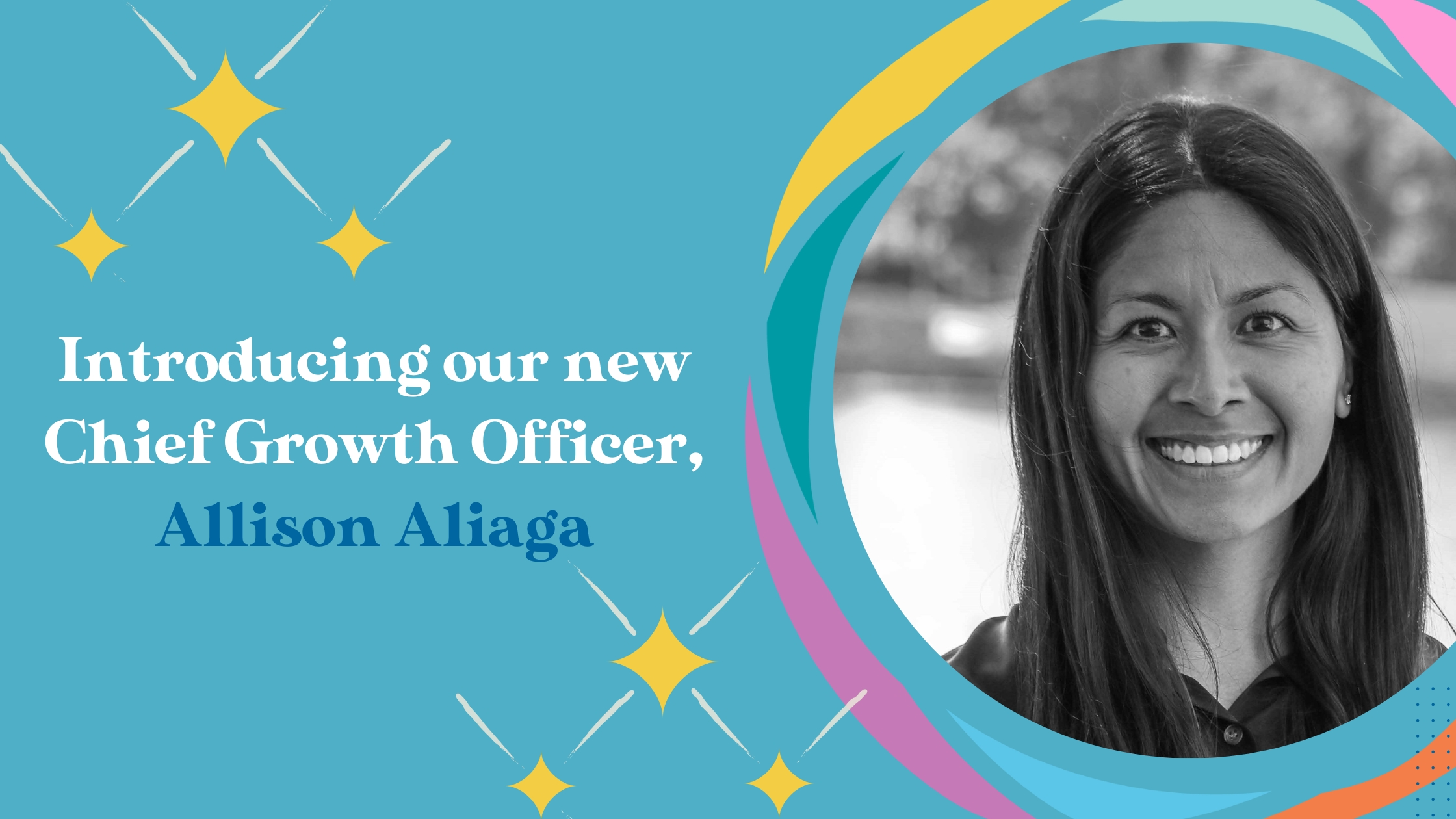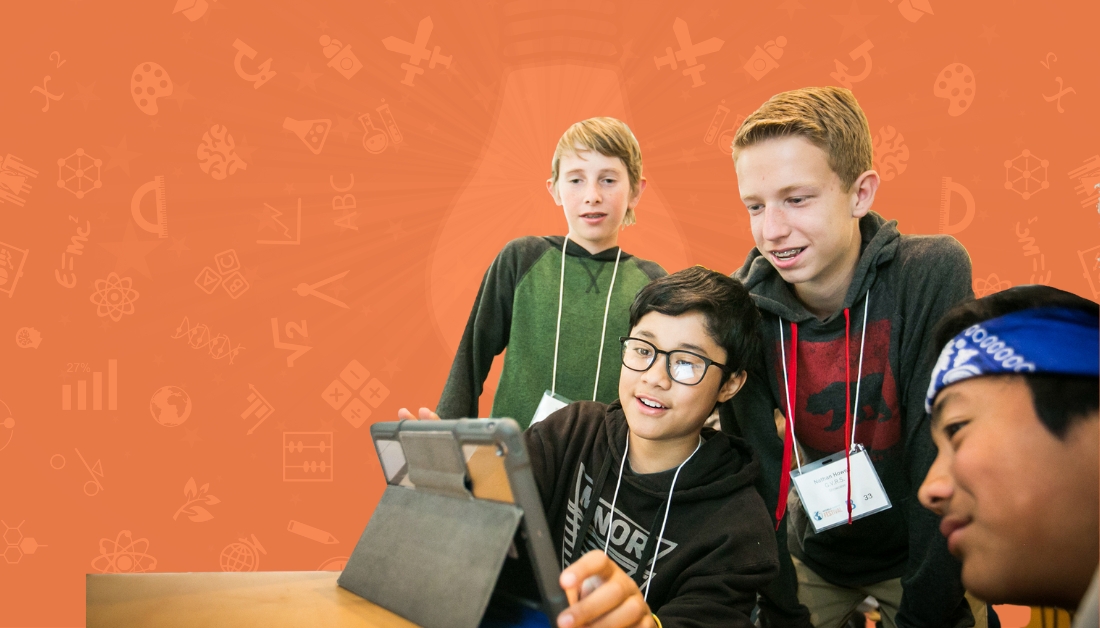Later this month, the World Savvy team is thrilled to welcome the latest addition to our team: Allison Aliaga, our new Chief Growth Officer (CGO)! The CGO is responsible for identifying, developing, and executing strategies to expand World Savvy’s reach and impact and support significant and sustainable scaling of the organization.
Allison joins World Savvy after over a decade supporting school districts and state-level education efforts at TNTP, and more recently, serving as Vice President at New Teacher Center. Her career began in the classroom, teaching elementary school, and later working as an instructional coach supporting teachers’ literacy practices. Since 2010, Allison has collaborated with a range of foundations, organizations, and government agencies on large-scale initiatives focused on educator growth, well-being, and improving the student experience. Throughout her career, she has helped organizations in the social sector discover how they can best contribute to solving society’s most pressing challenges.
We recently got to sit down with Allison and hear more about her story. Follow along with us to learn more about her, her journey to World Savvy, and her connection to our mission to educate and engage youth to learn, work, and thrive as responsible global citizens.
Tell us a bit about your story and why the mission of World Savvy resonates with you.
I’ll start with the story of how I became an American.
My parents are originally from Peru. In the late 70s, my mom was a school principal and my dad was studying to be an engineer. They had recently gotten married and had every intention of starting a family. However, Peru was also experiencing a lot of political instability. Eventually, life became tough—even basic things like finding enough food were difficult, and they were afraid of potentially raising a child in such a violent and politically unstable context. They knew they needed to leave, but wanted to go somewhere they knew the language and could continue their trajectory. They decided to move to Mexico and applied for asylum.
After waiting for several months, they were denied asylum and stranded in Mexico. My father’s siblings who were living in Los Angeles hired a coyote. A coyote is someone who transports immigrants across the US-Mexico border.
Like so many others before them, my parents crossed the US-Mexico border. Unlike many others, they made it safely across the border until they got into a car accident on the way to Los Angeles. My mom was injured and had to be taken to a hospital. She always tells me how kind the medical staff was to her even though she didn’t understand the language. She does remember understanding “Congratulations, you are having a baby.” That’s when my mom learned she was three months pregnant with me. That’s how I became an American.
My story is part of a larger American story. It is a story of people who had the audacity to flee violence and instability to start over in the unknown. It is a small sample of the true genius of America, “That all men are created equal. That they are endowed by their Creator with certain unalienable rights. That among those are life, liberty and the pursuit of happiness.” In no other country can two young adults cross a border with only the clothes on their backs, get jobs, eventually become citizens, and raise two children who were housed, fed, and more importantly given a childhood.
It is this idea that makes World Savvy’s mission resonate with me. That educating and engaging youth to learn, work, and thrive as global citizens requires us to hold the liberties we have as Americans close to heart. These liberties allow us to approach educating young people with a belief that they learn best when they are engaged in relevant and important issues that impact their communities and world. It is this belief that recognizes that it is critical that we prepare students to be engaged citizens, life-long learners, problem solvers, and critical thinkers. This unlocks the genius of students so they can lead a life where they have the freedom to live up to their highest potential.
What was your journey with education like?
My journey with education is complicated.
Both my parents are college educated and my mom was a former elementary school teacher. The expectation that I would someday go to college was made clear as far back as I could remember. My mom made sure that I entered kindergarten ready. If you would have asked me to describe myself on the first day of kindergarten I would have told you I was a reader, a writer, that I was smart, that I was a good kid, that I was beautiful. I would have told you I loved to learn and that I couldn’t wait to learn English and be bilingual.
School challenged these beliefs. I realized pretty quickly that what I knew did not matter unless it was in English. I remember sitting at a table crying while the other kids were at recess, and I had to sit with the teacher and repeat the names of shapes and numbers in English. I didn’t understand why she seemed so mad and why I had to repeat each word over and over again when I knew what the shapes were and what the numbers meant. That same year, I liked wearing pretty dresses until a little boy asked me, “Why are you wearing that? It’s too fancy and makes your skin look like poop.”
School became a place where I yearned to belong and where I got farther away from the sense of self I had entered with. I became a great chameleon, learned to speak English without an accent, and became fluent at reading any room to blend in and be as likable (as American) as possible.
School was also a place that opened doors of opportunity. It was also in school where I encountered grown-ups who were deeply invested in their students and who saw me past the masks I wore. This was my first grade teacher who told me I was lucky to be bilingual because it meant I could communicate with more people. This was my high school English teacher who told me I was an honest writer and it was my cross country coach who would confidently announce that I was a fast runner. It was my high school counselor who assured me I was competitive enough to apply to top colleges and who walked me and my family through the labyrinthine college application process. It was these grown-ups and many others who gave me room to grow into my own potential.
Tell us a bit about your career and your journey to World Savvy.
I always thought I would be an educator. My grandmother and mother were educators, and I followed in their footsteps working as an elementary teacher and literacy coach. I was preparing to transition into the school leadership role when I was working at a school in Los Angeles that was located in an affluent neighborhood but where the majority of the students were bused in. It was there that I had an experience where I had a significant experience attending two back-to-back meetings for two students with learning differences.
The first student was bused in from downtown Los Angeles. His meeting lasted all but 10 minutes with his mother agreeing to the support plan that was suggested. The second student was from the neighborhood, her parents showed up with their attorney. I was impressed at how effectively the attorney advocated for the support the student needed and deserved and I felt ashamed that I did not have the knowledge or the tools to do the same for the first student.
It was that experience that prompted me to apply to law school. I wanted to be an advocate for my students and I wanted to have the knowledge and tools to do so effectively. Life had other plans. It was at that time that the country was going through a financial recession and with that school leadership jobs were scarce. I was introduced to the non-profit sector, first working at the KIPP Foundation and then at the ACLU. It was there where I experienced the critical role of the social sector in working side-by-side with communities to do better than the generations that came before us and build something better for the generations to come.
I joined TNTP in 2010 where I oversaw a wide range of work that implemented TNTP’s offerings across curriculum, instruction, assessment, talent management and community engagement. TNTP was also a place where I learned that scaling work is more than sales. It is about understanding communities’ hopes and dreams and understanding if and how an organization is best positioned to support. It is this mindset that stayed with me through my work at New Teacher Center, where I led the organization’s revenue generating efforts. It was here that I had an opportunity to build on the great work of those who came before me and build an infrastructure to support through a new period of growth and through a new strategic plan.
My work is all about telling stories about the work people in communities across the country are doing to make their hopes and dreams for young people come true. This is the best part of my job and I am excited for the next chapter at World Savvy.
What an incredible journey to World Savvy—we are so excited to have you on the team! As a final question, a fun one: tell us a bit about yourself outside of work.
I am grateful for how full my life is. I am a mom to two boys who just want to hold my hand and jam through life. We are at the stage where we are everywhere, always doing something, mostly going to sports practices, baseball games and swim meets. I also have a strong support system of family and friends–nurturing these relationships is very important to me. Physical activity feeds my soul. I do something active every day. I’m a former long-distance runner but have recently developed a love for weightlifting and am on a journey to overcome my fear of the ocean. Recently, I bought a paddleboard and have been taking it to the beach any chance I get.
Thank you, Allison. We can’t wait to have you join the World Savvy team!
